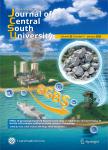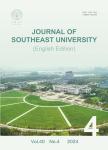
T=题名(书名、题名),A=作者(责任者),K=主题词,P=出版物名称,PU=出版社名称,O=机构(作者单位、学位授予单位、专利申请人),L=中图分类号,C=学科分类号,U=全部字段,Y=年(出版发行年、学位年度、标准发布年)
AND代表“并且”;OR代表“或者”;NOT代表“不包含”;(注意必须大写,运算符两边需空一格)
范例一:(K=图书馆学 OR K=情报学) AND A=范并思 AND Y=1982-2016
范例二:P=计算机应用与软件 AND (U=C++ OR U=Basic) NOT K=Visual AND Y=2011-2016

摘要:As the huge computation and easily trapped local optimum in remanufacturing closed-loop supply chain network (RCSCN) design considered, a genetic particle swarm optimization algorithm was proposed. The total cost of closed-loop supply chain was selected as fitness function, and a unique and tidy coding mode was adopted in the proposed algorithm. Then, some mutation and crossover operators were introduced to achieve discrete optimization of RCSCN structure. The simulation results show that the proposed algorithm can gain global optimal solution with good convergent performance and rapidity. The computing speed is only 22.16 s, which is shorter than those of the other optimization algorithms.

摘要:The classical supply chain network(SCN)design problem is extended,where the candidate facilities are subject to failure and the products are prone to elapsed time ***,the reliable SCN design problem is defined by introducing the probability that a facility may be prone to inactivity based on the analysis of perishable product *** perishable product SCN design problem is formulated as a 0-1 integer programming *** objective is to minimize the weighted sum of the operating cost(the fixed plus transportation cost)and the expected failure *** then,the perishable product SCN design model is discussed and solved using the genetic algorithm(GA).The results show how to generate the tradeoff curve between the operating costs and the expected failure *** these tradeoff curves demonstrate empirically that substantial improvements in reliability are often possible with minimal increase in the operating costs.

摘要:The implementation of closed loop supply chain system is becoming essential for fashion leather products industry to ensure an economically sustainable business model and eco-friendly industrial practice as demanded by the environmental regulations, consumer awareness and the prevailing social consciousness. In this context, this research work addresses a closed loop supply chain network problem of fashion leather goods industry, with an objective of minimizing the total cost of the entire supply chain and also reducing the total waste from the end of life product returns. The research work commenced with a literature review on the reverse and closed loop supply chain network design problems of fashion and leather goods industry dealt in the past. Then, the identified CLSCND problem is solved using a mathematical model based on Mixed Integer Non-Linear Programme (MINLP) and then a suitable Hybrid Genetic Algorithm (HGA) developed for the CLSCND is implemented for obtaining optimum solution. Both the MINLP model and HGA are customized as per the CLSCND problem chosen and implemented for the industrial case of an Indian Fashion Leather Goods Industry. Finally, the solutions obtained for MINLP model in LINGO 15 and for HGA in *** platform are compared and presented. The optimum solution obtained from the suitable HGA is illustrated as an optimum shipment pattern for the closed loop supply chain network design problem of the fashion leather goods industry case.

摘要:To understand the utilizability of TV white spaces (TVWS), a comprehensive overview of the outdoor and indoor network design over TVWS is given. The related challenges are analyzed. The potential approaches to overcoming these challenges are discussed. The open research issues are investigated. The result shows that: in the indoor scenario, the white space ratio is on average 18.4% higher than that in the outdoor scenario, which corresponds to 7.7 vacant TV channels. Both network design includes 7 key components: TV spectrum identification, access point (AP) discovery, AP association, spectrum allocation, band width adaptation, interface control and disruption handling. Due to building penetration loss, the indoor TVWS identification and AP placement should be carefully considered in the indoor scenario.

摘要:精准估算陆地生态系统碳汇对中国制定碳减排措施、实现碳中和目标有重要科学支撑作用.大气反演方法基于大气二氧化碳浓度观测数据,可有效估算地面二氧化碳通量的时空分布.目前中国陆地生态系统碳汇的大气反演估算仍有巨大不确定性,其中一个重要瓶颈在于缺乏足够的二氧化碳观测站点.本文研发了针对中国区域的大气反演框架,提出了二氧化碳观测网络的站点布设方案以最大程度降低中国陆地碳汇反演估算的不确定性.研究表明,在现有站点基础上,亟需在生长季植被生产力较高的东南、东北、华北和青藏高原地区增设二氧化碳观测站点.若在中国建设30个大气二氧化碳观测站点可将碳汇估算不确定性从每年10亿吨碳降低至3亿吨碳;建设60个站点可将不确定性进一步降低至每年2亿吨碳.这些站点将是“天-空-地”综合碳观测系统的重要组成部分,服务于中国二氧化碳收支反演和精准核算.
地址:宁波市钱湖南路8号浙江万里学院(315100)
Tel:0574-88222222
招生:0574-88222065 88222066
Email:yzb@zwu.edu.cn

